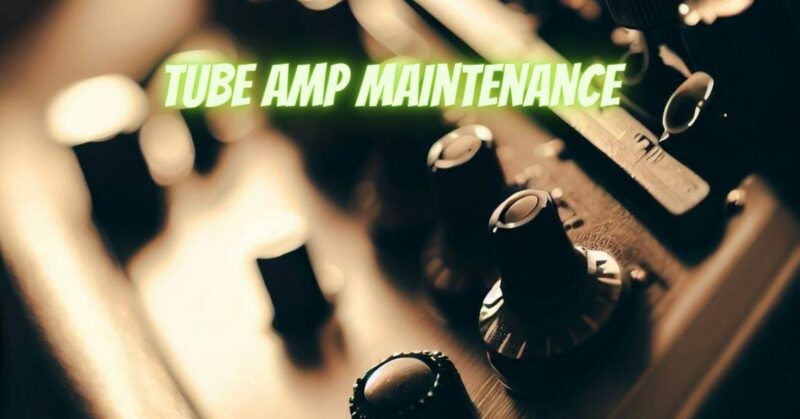Tube amplifiers, also known as valve amplifiers, have a longstanding reputation for their warm and rich sound, making them beloved by audiophiles and music enthusiasts worldwide. However, to maintain their optimal performance and longevity, tube amplifiers require regular care and attention. In this article, we explore the essential aspects of tube amp maintenance, guiding both seasoned audiophiles and newcomers in preserving the magical allure of these classic analog devices.
- Understanding Tube Amplifiers:
Tube amplifiers utilize vacuum tubes (valves) to amplify audio signals, providing a distinct and warm sound that many enthusiasts find enchanting. These electronic components require high voltage to function correctly, which can also make tube amps more delicate and susceptible to wear over time.
- Cleaning and Dusting:
Regular cleaning and dusting are essential to keep your tube amp in top-notch condition. Dust and debris can accumulate on the tubes, circuitry, and ventilation holes, potentially hindering airflow and causing the amp to overheat. Using a soft brush or compressed air, gently remove the dust and ensure proper ventilation.
- Tube Inspection and Replacement:
Tubes are the heart of a tube amplifier, and their condition significantly impacts the sound quality. Periodically inspect the tubes for signs of wear, such as glowing too brightly or not at all, microphonic noises, or erratic sound. If you notice any issues, consider replacing the tubes with high-quality replacements from reputable manufacturers. Regularly replacing tubes after a certain number of hours (depending on usage) can also prevent unexpected failures during critical listening sessions.
- Bias Adjustment:
Tube amplifiers often require bias adjustment to ensure proper current flow through the tubes. Incorrect bias settings can lead to uneven wear of the tubes and compromise sound quality. If you are not familiar with bias adjustment procedures, it’s best to seek the help of a qualified technician.
- Power On and Off Procedure:
The power on and off process can significantly impact the life of your tube amp. Allow the amplifier to warm up for a few minutes after turning it on before applying any audio signals. Similarly, turn off the amplifier first before turning off other components in your audio system. This practice helps avoid sudden voltage spikes that may damage the tubes.
- Keep It Cool:
Tube amplifiers can generate significant heat during operation. Ensure that the amplifier has enough space around it for proper ventilation. Avoid placing the amp in closed cabinets or tight spaces, as this can cause overheating and potentially damage the components.
- Regular Servicing:
Just like any complex electronic device, tube amplifiers benefit from periodic servicing by a qualified technician. Professional maintenance can identify and address potential issues, clean internal components, and ensure the amplifier is performing at its best.
Tube amplifiers are a testament to the enduring charm of analog audio. To preserve their magical sound and extend their lifespan, regular maintenance is crucial. Cleaning, tube inspection and replacement, bias adjustment, and proper power on/off procedures are among the essential aspects of tube amp care. By investing time and effort into maintaining these classic devices, you can continue to immerse yourself in the rich and warm sonic experience that tube amplifiers have been celebrated for over the decades.


